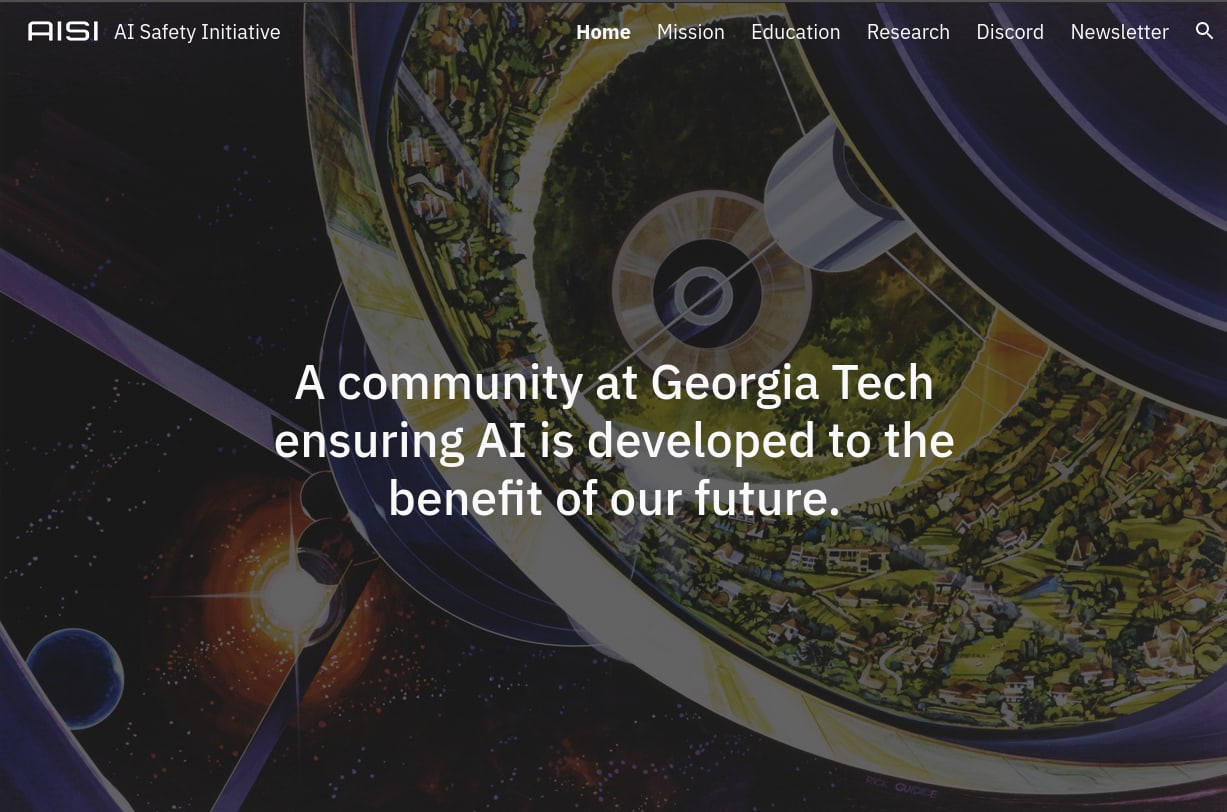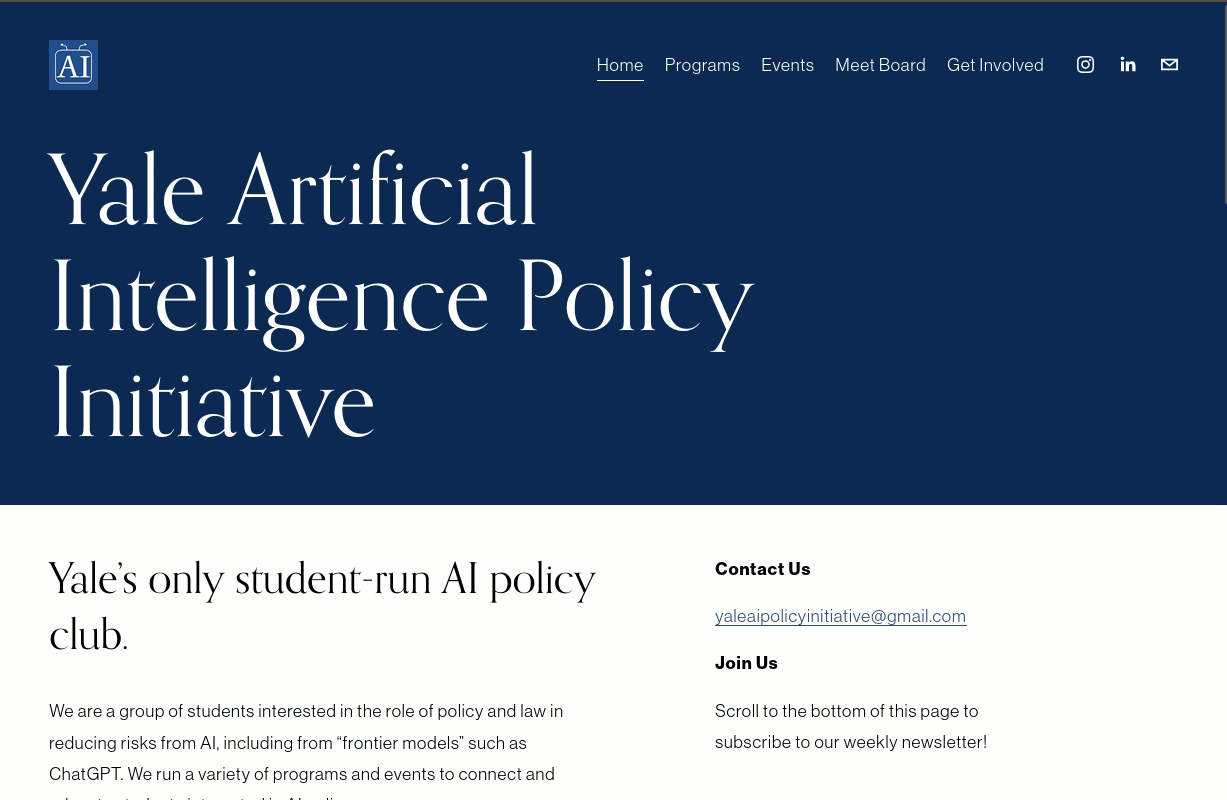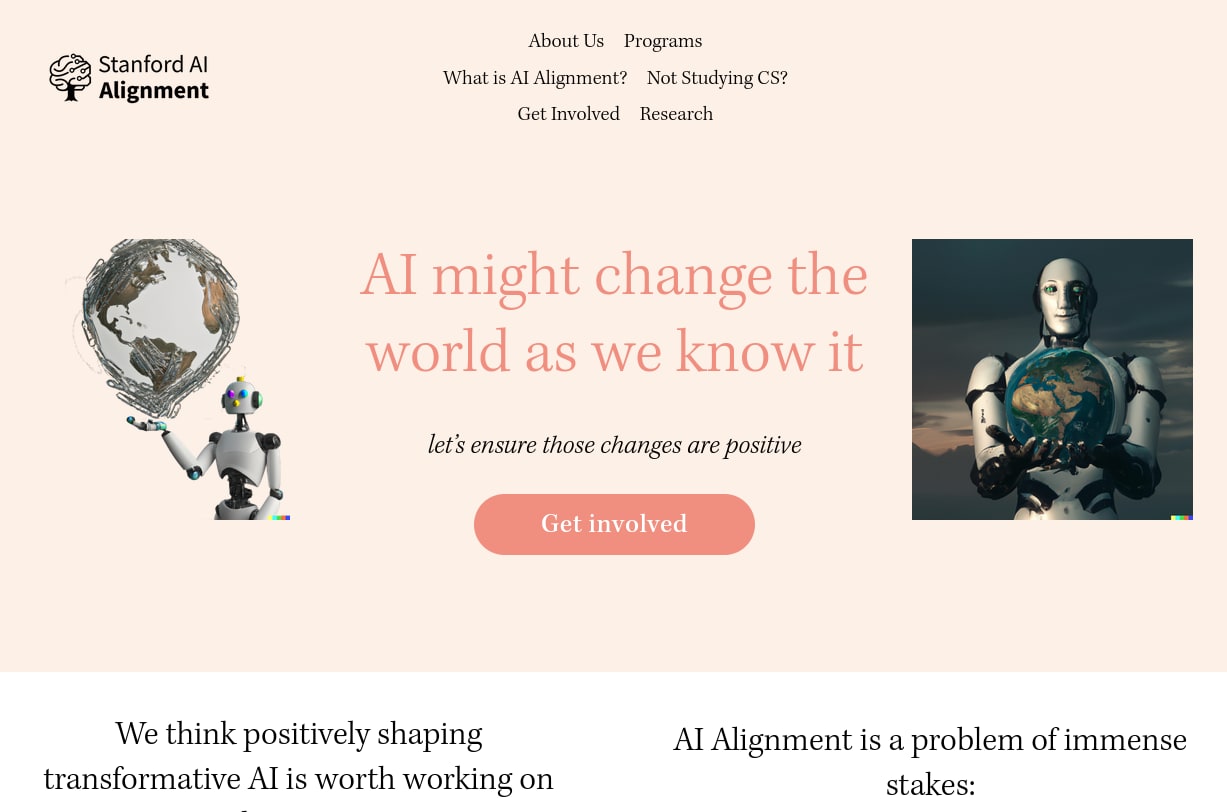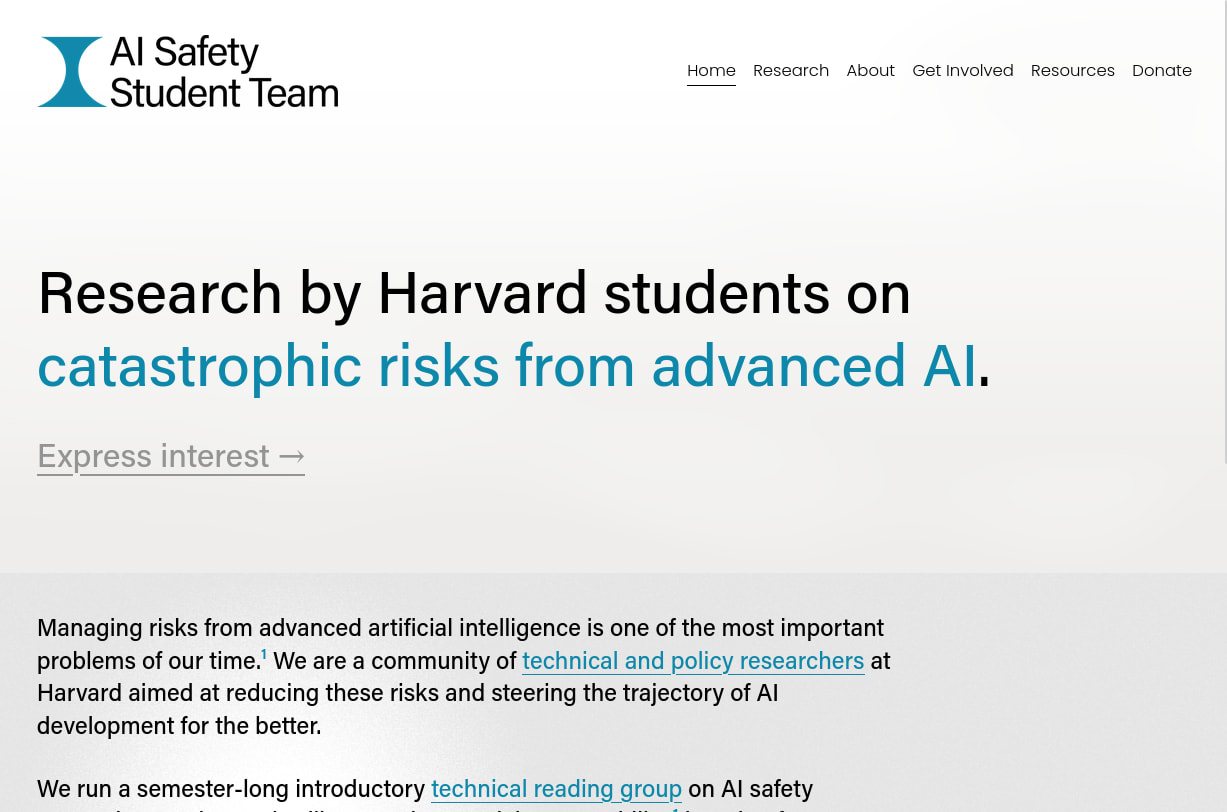Branding AI Safety Groups: A Field Guide
post by agucova · 2024-05-13T17:17:01.799Z · LW · GW · 0 commentsContents
Introduction Why branding matters What failure looks like Defining your strategy Some high-level strategies Technical-leaning Institutional-leaning Impact-leaning Broad disciplinary appeal Conclusion Annex: Some practical tips on websites None No comments
This article is the first in a series I plan to publish on different aspects of AI Safety group strategy. The aim is that, eventually, these articles will form the basis for a new resource center for AI Safety Groups. Note that these articles aren’t being published in any particular order.
TL;DR: AI safety groups should carefully consider their branding strategy to attract target audiences and avoid silently losing talented individuals by giving the wrong impressions. Key things to do are identifying audience profiles, tailoring the value proposition and differentiating your group from others. Common branding strategies (technical, institutional, impact, or broad appeal) each have tradeoffs to weigh based on your goals and your context. Regularly seek feedback to refine branding rather than relying solely on intuition.
Introduction
In some ways, it’s still the early days of AI Safety groups. Groups, whether they’re at universities, entire cities, or online, are still trying to figure out what works and what doesn’t. In many ways, AI Safety groups are much more heterogeneous than, say, EA groups, and this is to be expected: there isn’t broad agreement about things like group strategy, programming, or even a defined set of common goals.
One aspect of this heterogeneity is branding. This is partly a good thing: AI Safety is a field, not a cohesive community, and it often needs to appeal to very different audiences. At the same time, we could benefit from sharing lessons learned from aspects like branding, especially as groups continue to experiment and collect feedback from the real world.
This post is a provisional field guide for group organizers to think through their branding and incorporate some of the early lessons learned from other groups.
Why branding matters
First impressions matter. It’s easy for organizers to underestimate how many talented people they lose to self-exclusion. The “vibes” you project can be a dealbreaker for many people, and these are often silent failures: it’s difficult to realize this is happening unless you make an explicit effort to find out about it.
Many group organizers have seen steep and surprising benefits after branding changes[1], and based on my interaction with many organizers, I suspect many groups’ early struggles with outreach stem from the problems I describe below. Branding is not a silver bullet, but it certainly helps.
But before we jump in, a brief disclaimer: branding is not about being strategically dishonest or hiding your intentions from others, it’s about communicating clearly and making a compelling case for why others should care about your group. It’s an exercise in communicating clearly, not in deception, and it’s important to distinguish between these two things.
What failure looks like
To illustrate my point, here are some examples of failures that can occur from using the wrong branding strategy for a particular audience. All of these are loosely inspired by actual experiences from groups:
- A law student is looking for extracurriculars for the semester and finds about a student group advertising an AI policy fellowship. She looks into it, but by their website, the group looks like your typical random CS student club, and apparently they run this “fellowship” over Discord. She quickly rules it out.
- A CS PhD student is dissatisfied with the research being done in his lab and wants to do something more meaningful. He’s read some convincing papers on AI Safety, but it’s not like there’s anyone interested in this kind of research on campus (or funding for it). There’s an AI Safety group on campus, but they are just a bunch of undergrads and don’t seem to be doing any research.
- A recent policy graduate is looking for opportunities to break into tech policy. After some searching, they find that a group in their city offers an AI policy fellowship. The fellowship's contents look interesting, but the group seems unprofessional, and not like the kind of thing you would proudly put in your CV. She looks into other options.
- A big EA city group decides to start an AI Safety subgroup and starts doing outreach outside the group to find people interested in their technical fellowship. They later discover that only a few people applied for the fellowship, all of whom are part of the EA group.[2]
- An ML professor is curious about the possibility of doing AI Safety research. He recently heard that some students on campus started an AIS club, so he looked them up. He immediately gets the vibe that it’s an advocacy group, which he finds off-putting. As a result, they refrain from reaching out to the group.
You get the gist: it’s important to consider how you’re perceived by others. Particularly those in your target audiences, but occasionally those outside of it.
Edit: Note that these can also be successes, depending on your target audiences. Signaling clearly who you're not looking for is also valuable, as it avoids bad experiences from misaligned expectations about your group.[3]
Defining your strategy
These are some things to consider when rolling out your own branding strategy. Even when a group is following or copying an existing strategy (as the ones below), I think organizers would benefit from taking some time to think through these considerations anyway:
- Target audiences
- Think through who your audiences are, and write down their profiles.
- Consider not only their demographics (“3rd year CS student”) but also their interests (“wants to perform research that feels valuable”) and how they might find out about your group (“regularly checks the faculty mailing list for TA opportunities”).
- These aren’t necessarily just your audience of potential members. They could also include other important stakeholders (for example, professors or decision-makers).
- Value proposition
- Think about each of your audience profiles and what’s your value proposition to them.
- Do they want to join your fellowship because they are looking for their first research opportunity? Because they like having intellectual conversations? Because they like hanging out with people who care deeply about things?
- Positioning
- Especially in the case of university groups, consider how your group positions itself among other student groups: What sets you apart? If you’re in a city and national group, you might think broadly about, for example, competing career opportunities or technical communities.
- Some groups have ensured they look more dedicated, competent, interesting, or exclusive than other competing opportunities or communities and use this to their advantage.
If your group changes scope (for example, by starting an AI Governance fellowship in an otherwise technical group), you should probably revisit these considerations to ensure you’re not failing to update your strategy for a different set of audiences.
It’s easy to dismiss as unnecessary distractions from organizing, but once you let organizing flow downstream to some of these considerations, you’ll find that many things become much easier.
Some high-level strategies
I’ll review some high-level strategies groups might want to follow and their tradeoffs, giving examples of each. This is not meant to be an exhaustive list, but I suspect it encapsulates the implicit strategies of many groups relatively well.[4]
Note that these strategies are ultimately context-dependent. Different cultures, countries, or even universities might interpret certain elements differently, and you should be ready to adjust accordingly. That said, in my experience, new organizers frequently over-update to their local context[5], so a good strategy is to copy other strategies at first and then tweak them based on actual feedback, not just intuition.
You don’t necessarily need to choose only one of these. Groups might benefit, for example, from using a broad-appeal strategy for the group itself while branding their technical and governance programs differently. If you have a website, your landing page can use a strategy different from the page for your technical fellowship, as long as the group’s brand still feels relatively cohesive.
Technical-leaning

- Audience
- People with a strong interest in CS or ML
- People who relate to hacker culture.
- General attributes
- Use of dark, rich colors.
- Occasional use of monospaced fonts or color gradients
- Feels deeply technical, clever, and even chaotic or playful.
- Tradeoffs
- In most cases, it can feel strongly off-putting to almost everyone else.
- Even within a CS department, this kind of branding can often appeal more to men than women or non-binary people.
- Examples
- Of groups: AISUC, BASIS, Georgia Tech, Warwick AI, AI Safety Gothenburg
- A favorite non-group example is Apart Research
Institutional-leaning

- Audience
- People seeking credentialed opportunities in law and public policy
- Experts or decision-makers in these areas
- General attributes
- Use of light palettes
- Relatively neutral language
- Often, a focus on signaling either credentials (of people) or institutional reputation (often through “we have worked with” sections)
- Tradeoffs
- Doesn’t carry much energy or motivation: can be unhelpful if you want people to be action-oriented.
- Can look significantly less attractive to strictly technical audiences.
- Examples
- No groups I know of fully lean into this, but a good non-group example is CAIS
- To a lesser degree, Yale AI Policy, AIGS Canada, and RAIN do some of this.
Impact-leaning

- Audience
- General attributes
- Use of light, warm palettes
- Heavy use of “problem framing” or “fairness framing”
- Generally has a friendly and welcoming tone
- Tradeoffs
- It can turn off people who aren’t yet convinced that AI Safety (or ethics) is a big problem
- Since it’s usually associated with openness (in contrast with exclusivity), it can trade off with signals of technical competence[7] or have bad positioning among other groups
- Examples
- Stanford AI Alignment
- AI Safety Initiative Groningen
- Often, AI Safety fellowships run by EA groups
Broad disciplinary appeal

- Audience
- Appeals broadly to the broad class of people who think AI might be transformative or who worry about its impacts on society.
- General attributes
- A bit of a mix between institutional-leaning and technical-leaning strategies
- Looks professional, but not bland. It carries a strong message.
- It might also lean into exclusivity and competitiveness.
- Tradeoffs
- While this can be a good one-size-fits-all, it trades off with every audience by being unspecific
- This downside can partly be remediated by combining strategies (see below)
- Examples
Conclusion
AI Safety groups have great potential, but this potential can sometimes be unnecessarily curbed by practical considerations, such as how they decide to brand themselves. Hopefully, this guide can serve as a starting point for organizers, both new and experienced, to think through some of these considerations and iteratively improve their groups.
Annex: Some practical tips on websites
If you have a website, try to make sure that:
- Your landing page is consistent with your branding strategy
- Your landing page contains a clear & short description of what your group is, what it does, and how people can participate (a call to action)
- It’s very easy to fail at this!
If you want a website, but you’re not confident in being able to afford/build a custom one:
- Consider using no-code tools like Squarespace, Wix, or Webflow
- But make sure your page doesn’t look generic
- Don’t just pick a cool-looking template, put in some time to customize it so it matches your branding
- If you’re going for a technical-leaning strategy, consider using the template made by AI Safety Hungary [EA · GW]
- ^
- ^
The issue doesn’t seem to be that EA is involved, but rather that none of the elements that would appeal to a technical audience alone are present. This doesn’t mean you should hide your group’s involvement, but rather that you should think about what your audience cares about in the first place.
- ^
Thanks to @Jamie Bernardi [LW · GW] for suggesting this addition
- ^
Some groups which seem hard to encapsulate in one of these: AI Safety Tokyo, UVic AI and WAISI. I expect some of the examples to be a bit of stretch, since there aren't good prototypes for some of these strategies .
- ^
One example is that when I started my first EA group, the other organizers and I assumed that it would be better to figure out most things by first principles, given the different cultural context at a Chilean university. It took us a year to realize that many of the recipes followed by other groups actually transferred pretty well, and ours lacked real experience.
- ^
This might seem like a contradiction with appealing to AI ethics, but I think branding is separate from content, and groups pursuing this kind of framing can appeal to both, either or neither.
- ^
This isn’t to say this is necessarily a bad thing, but exclusivity can also be a powerful signaling tool [EA · GW]. Deciding where to lay in the spectrum between openness and exclusivity is one of the trickiest decisions when it comes to group strategy.
0 comments
Comments sorted by top scores.